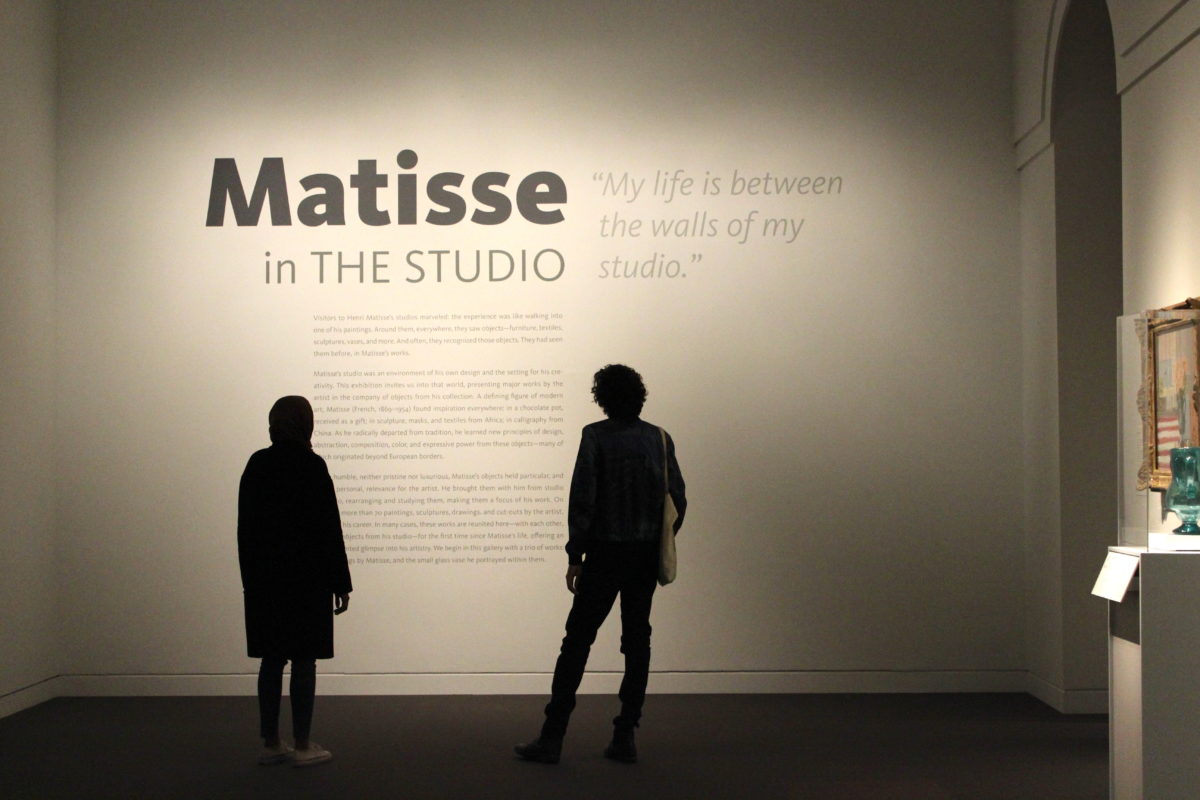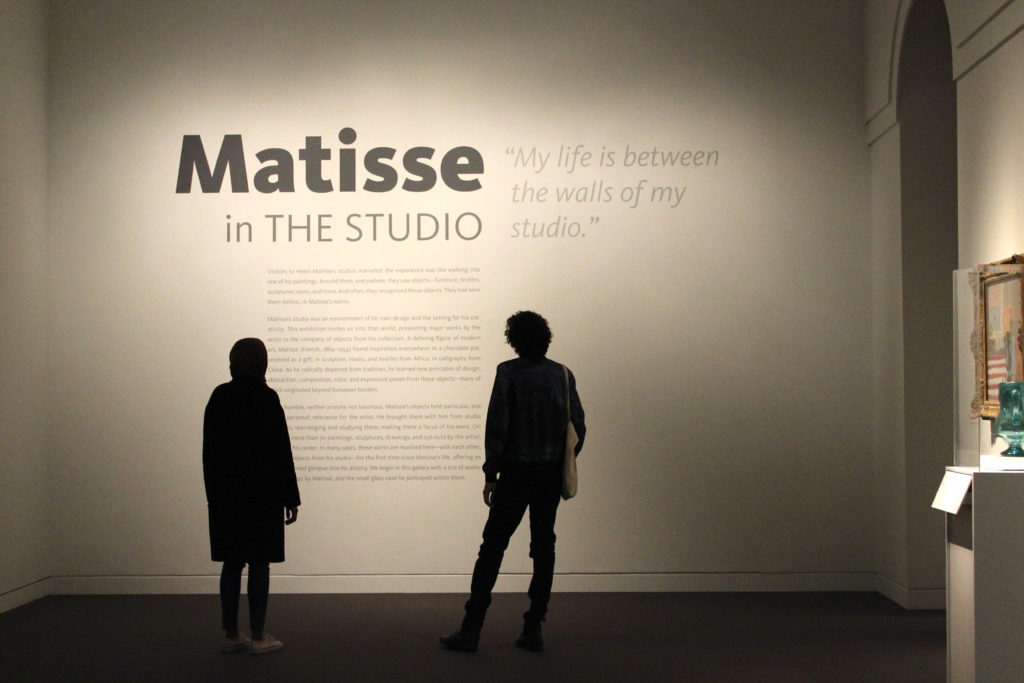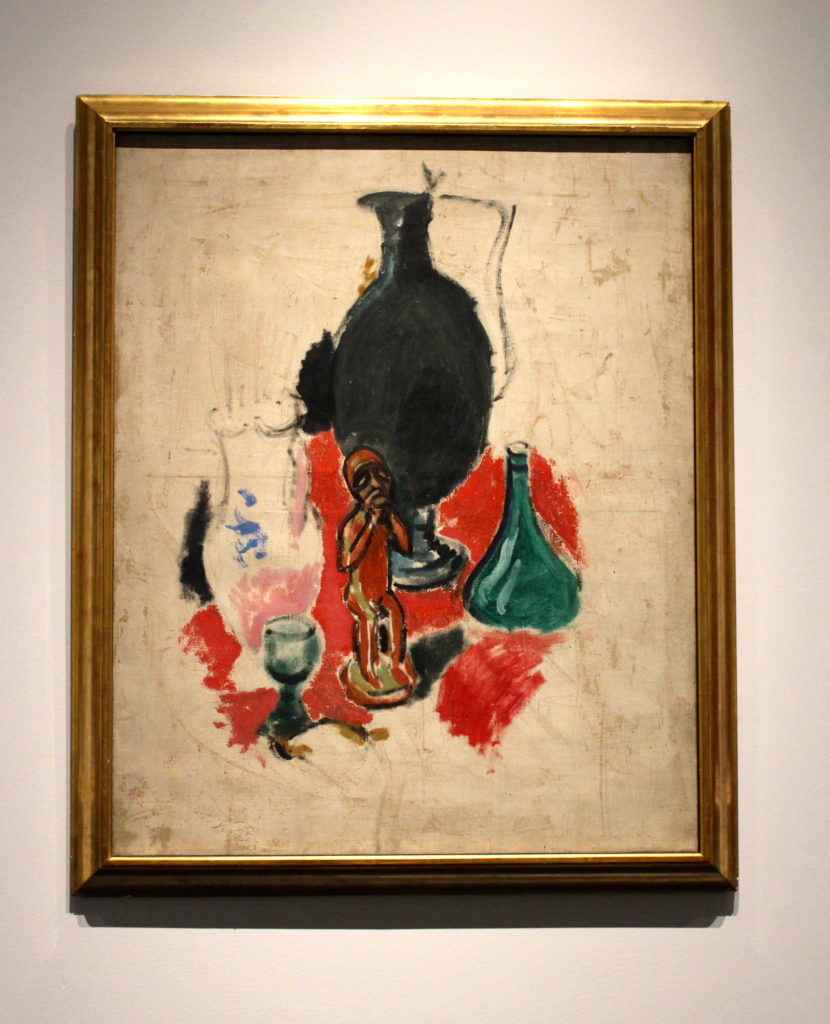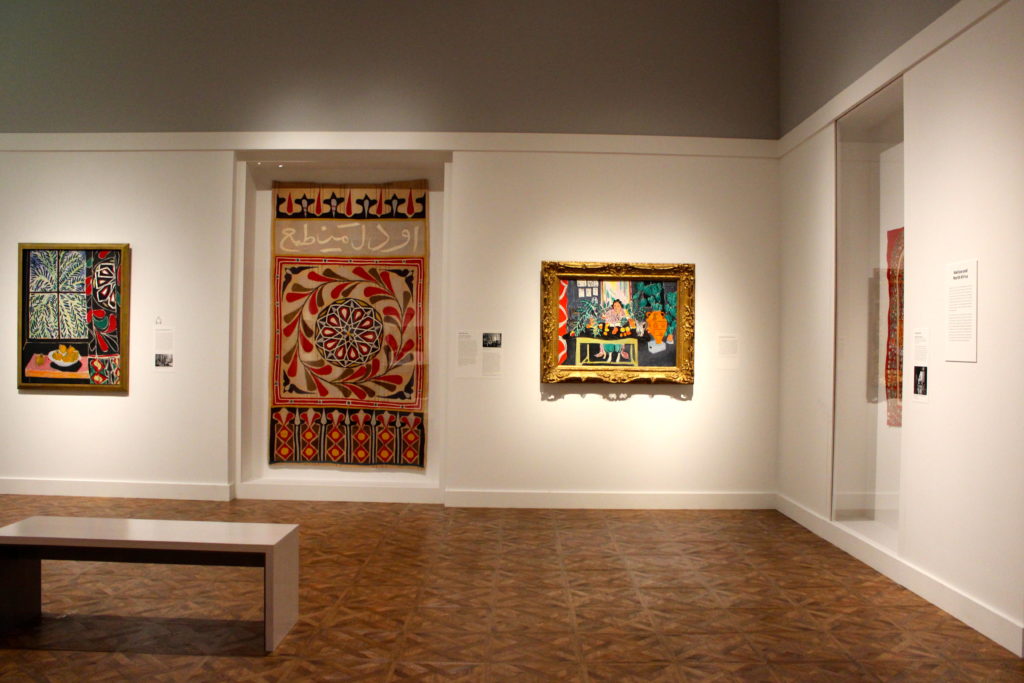
For the next three months a multi-room exhibit of Matisse’s works lives at the Museum of Fine Arts, Boston. Designed around his work space, the show pairs objects from the artist’s studio with the paintings they appear in. Seeing the objects Matisse surrounded himself with provides some interesting insight into the colors, shapes, and materials that caught his interest.

I love Matisse’s work. The vibrant hues, the intimate portraits, and the avant-garde style resonate with me both on an aesthetic level and symbolically. Unfortunately, the exhibition isn’t designed to highlight the beauty of the paintings. Finding each object in the paintings around it and comparing the depictions is engaging at first but becomes a “where’s Waldo?” search that distracts from the value of the artworks. This setup also lends itself more to Matisse’s still lives than his portraits. These paintings are no less valuable but I personally find them in bulk to be less dynamic than his figure works.
The MFA owns “Carmelina,” one of Matisse’s most well known nudes. but it’s currently on loan to the Baltimore Museum of Art and doesn’t appear in this exhibit. Gaps like that are especially obvious when an entire room of “Matisse in the Studio” is devoted to paintings of a coffee pot.

“Still Life with African Statuette,” pictured above, captured my attention. Though displayed for its inclusion of the statuette (also on view) I found the deconstructed nature of the piece particularly interesting. Matisse isn’t known for his use of negative space, but here the bare canvas roughed lightly by sketch marks points the eye towards the central images. The varying degrees of detail in each object shows us the artist’s process from conception to completion.
The African-inspired pieces, paired with their corresponding statues and sculptures, are some of the most dynamic. It was Matisse who introduced Picasso to the African themes that captivated him for years to come. This collection also calls cultural appropriation into question. You can see the slit eyes of African masks appearing in Matisse’s works and it seems that the Western abstract tradition wouldn’t have thrived without exposure to art forms of other cultures. In this way, the comparison of one art piece to another is revealing and unnerving.

The object-painting comparisons aren’t always distracting. In the room pictured above, intricate wall hangings are paired next to paintings that draw from their vibrant patterns. The faux-wood flooring also gives the room a cozier vibe, making you feel more like you’re in the studio itself. The other rooms would have benefited from the balanced curatorial design exercised here.
Matisse once said, “The object is an actor. A good actor can have a part in ten different plays; an object can play a role in ten different pictures.” The premise of seeing Matisse’s artistic growth through his changing depiction of the same objects over time is interesting, but not substantial enough to hold the weight of a career-spanning exhibition like this one.